 Your new post is loading...
 Your new post is loading...
Don’t expect to see too many wearable devices like Apple Watches and Fitbits under Christmas trees this year—they’re not on many wish lists.eMarketer has significantly revised its estimates of wearable-device users in the US. The still-young category showed early promise, but usage has not expanded beyond early adopters. In October 2015, eMarketer expected usage among US adults to grow more than 60% this year. But according to its latest forecast, it will only grow 24.7%, as smart watches in particular have failed to impress consumers. This year, 39.5 million US adults will use a wearable device (with internet connectivity) at least once a month, far less than the 63.7 million previously forecast. Smart watches haven’t caught on in large numbers, primarily because of their high price point and lack of definitive use case. This year, usage of wearables will reach just 15.8% of the population. That penetration rate is only expected to grow to 21.1% by 2020....
While many companies, big and small, have been jumping into the wearables space in recent years, the use-cases for these devices often feels superficial — with fitness perhaps the most compelling scenario at this nascent stage. Yet smartwatches have far richer potential than merely performing a spot of sweat tracking.
The other problem with the current crop of smartwatches is the experience of using apps on wrist-mounted devices does not always live up to the promise of getting stuff done faster or more efficiently. Just having to load an app on this type of supplementary device can feel like an imposition.
If the primary selling point of a smartwatch is really convenience/glanceability the watch wearer really does not want to have to be squinting at lots of tiny icons and manually loading data to get the function they need in a given moment. A wearable needs to be a whole lot smarter to make it worth the wearing vs just using a smartphone.
At the same time, other connected devices populating the growing Internet of Things can feel pretty dumb right now — given the interface demands they also place on users. Such as, for example, connected lightbulbs like Philips Hue that require the user to open an app on their phone just in order to turn a lightbulb on or off, or change the colour of the light.
Which is pretty much the opposite of convenient, and why we’ve already seen startups trying to fix the problems IoT devices are creating via sensor-powered automation....
Two months after Amazon (Nasdaq: AMZN) announced a platform to connect appliances to the internet, Amazon Web Services’ Internet of Things is out of beta and available to customers.
The platform – similar to offerings from Microsoft (Nasdaq: MSFT) and IBM – can command smoke alarms and fitness trackers from computers.
Moreover, it extends far beyond the home; it can monitor and manage critical infrastructure such as wastewater treatment facilities and wind turbines.
The Internet of Things, as it is known, is big industry for tech companies working to connect devices to the cloud. Microsoft – which estimates there will be 30 billion connected devices by 2020 – launched in the space last year with its Azure platform. Google-owned home automation company Nest, which makes smart thermostats and other connect devices, announced earlier this year plans to open a Seattle-area engineering center and hire 100 employees....
Many corporate investors and smart money VCs have placed significant bets on the Internet of Things industry, which is expected to see nearly $2B in funding through the end of 2015.
Which firms are most active? We used CB Insights data to rank VCs by their unique IoT investments over the past 5 years.
Intel Capital tops the list as the most active investor in IoT startups, followed by Qualcomm Ventures. Both small-chip companies’ venture arms have been active investors in wearables startups and sensor companies. Since Intel and Qualcomm are involved in designing and/or manufacturing ever-smaller chips to power mobile devices, this area likely offers them strategic value....
We know the Internet of Things is big and going to be massive in scope, impacting all aspects of marketing and communication.
Some recent data points from some of the very large companies fueling the growth yet again highlight just how big a deal this is.
Within five years, 200 billion so-called smart objects will be deployed, according to Intel’s latest guide to all things IoT. That translates to 26 smart objects for every human being on earth....
But with the impending convergence of in-home connected devices, such as smart refrigerators, washing machines, and coffee makers, and technology platforms for instant replenishment, such as Amazon Dash, the home and shelf are merging. Why would a consumer need a shopping list, or have to visit a store, when their consumable items just show up at their home when they need them?...
Receiving email messages from friends and family is incredibly common, but soon we may be receiving messages from our fridges and toothbrushes. Is your milk about to go bad? Your refrigerator will send you a reminder for the next time you make a trip to the grocery. Even workout clothes are being designed to monitor a person’s heart rate and burned calories.
All this smart technology is part of the Internet of Things (IoT), a clunky term but one that refers to the various high-tech products equipped with an Internet connection that enables them to relay helpful data to the owner. Smart phones and watches were just the beginning, and now kitchen appliances, thermostats, and even baby onesies are being created with sensors that can relay information via an app or through email. All this is meant to improve the quality for life for consumers, but it also adds up to new marketing opportunities....
|
Nearly 250 years later, in a world defined by technological change, we see the same fears and concerns. As of September 2015, Amazon had 30,000 Kiva robots automating its warehouses, increasing efficiency and reducing the need for pick-and-pack labor. And at the same time, demand for software developers continues to rise, as Marc Andreessen’s famous 2011 statement that “software is eating the world” becomes ever more true.
Over the next decade, we’ll see this pattern play out once more in the nascent Internet of Things (IoT). With an industry defined by “bringing physical things online,” many IoT business models are predicated on improving efficiency by eliminating labor. We see companies connecting garbage cans to the internet to improve the efficiency of deploying waste collectors — which means we’ll need fewer waste collectors. Drones are dramatically reducing the time it takes to survey a plot of land — which means we’ll need fewer surveyors. Every industry that involves electronics or equipment can expect to be disrupted in this way over the next 10 years.
So the same question that was asked in the late 1700s remains: Will this new technology eliminate jobs? No....
The acceptance of mobile payments in countries such as Japan, North America and some Western European countries will lead to 50% of consumers in such mature markets using a wearable device or their mobile device to make payments by 2018.
Three types of mobile payments or wallets were identified by Gartner, namely smartphones or wearable tech, branded mobile wallets from banks or credit cards and branded mobile wallets from retailers.
However, rather than mobile payment wallets that are tied to a device, Gartner forecasts that cloud-based solutions will have a better rate of adoption as they are able to "reach a wider audience and can support many use cases beyond face-to-face or in-store options".
Last year, a report on wearable payments from Tractica predicted transaction volumes will increase significantly over the next five years rising from around $3.1billion in 2015 to $501.1billion by 2020 and accounting for about one-fifth of all mobile transactions and 1% of all cashless payments in retail....
The Internet of Things will be made up of many things that are constantly on the move.
Many of the connected objects will be stationary, of course, and a lot of those already are being put in place.
There are the obvious smart objects, such as connected thermostats at home and beacons in stores.
And then there are some that are not so obvious, such as the 100 Los Angeles street lights with Wi-Fi built in and the small cells inside manhole covers in Zurich that are linked to the landline infrastructure....
Hitting up CES in Las Vegas this January? If you're like many marketers, the rapid developments in consumer technology are impacting how you're approaching your job. Disruptive technologies transform consumer behavior and change how marketers get their messages across. That's why staying ahead of the next big thing has never been more important.
We've been through the year of mobile and the year of data. So what breakthrough will shift the balance this year? We've outlined five of the top technologies you'll want to keep your eyes on as you're scouring the CES show floor..
Just over half of marketers expect the Internet of Things, with ubiquitous, embedded devices constantly conveying real-time data, to revolutionize marketing by 2020. Along with this they see the power of real-time personalized mobile communication as one of the biggest trends.
Here are the trends that marketing executives see as having the biggest impact on marketers within five years: - 51% -- Internet of Things
- 50% -- Real-time mobile personalized transactions
- 29% -- Wearable technology
- 26% -- Virtual/augmented reality
- 13% -- Privacy backlash...
With the iPad, the notion of technology getting out of the way meant designing a computer so easy to use that the apps took center stage. But the result was in some sense counterproductive; we've become so sucked into our phones and tablets that technology is actually getting in the way of the real world.
It's not going to be like that forever. In talking to leaders from some of the most innovative companies in consumer electronics, it's clear that the next five years will represent an attempt to bring us back to reality. This may seem paradoxical, but a proliferation of wearable devices, smart-home gizmos, smart cameras, and augmented-reality systems will exist largely to save us from our screens....
The idea of a connected world where objects can communicate via the internet with each other and with computers and smartphones, does seem to have endless and even overwhelming possibilities.
For businesses, IoT technology opens up the potential for smarter process and efficiency, more targeted marketing and better understanding of customers by utilizing data and digital insight. The opportunities are so vast, that for many companies, coming up with a clear strategy for how to implement this new technology is a huge step.
In the retail industry, recent research conducted by Forrester found that 96% of retail decision makers are hoping to make the necessary changes to adopt IoT technology in the near future but over half are concerned about integration challenges. And this is a big part of the issue – to really make sure they harness the potential of this new technology, customer focused businesses need to first consider a few key areas....
|



 Your new post is loading...
Your new post is loading...

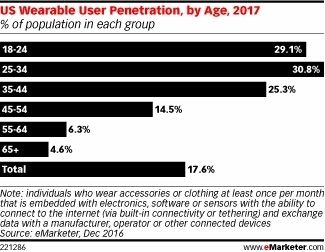



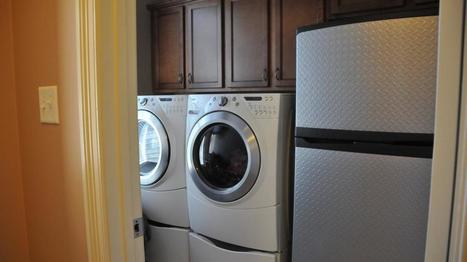

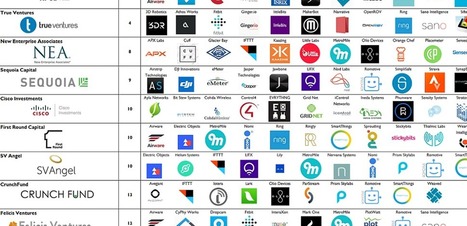





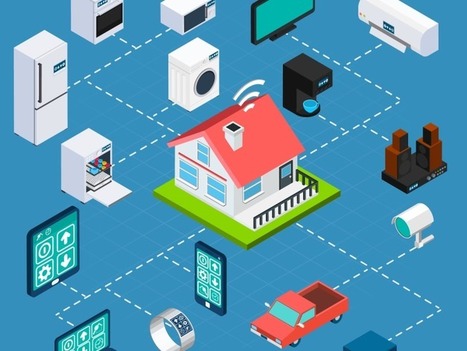

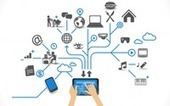
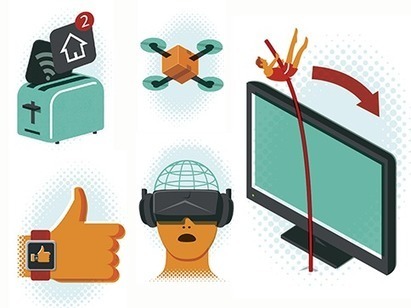










Devices haven't won over users other than early adopters. Apparently we don't need talking jewelry, IoT dog leashes and wearable little black cocktail dresses that sing! ;-)